HackMexico and Open Data
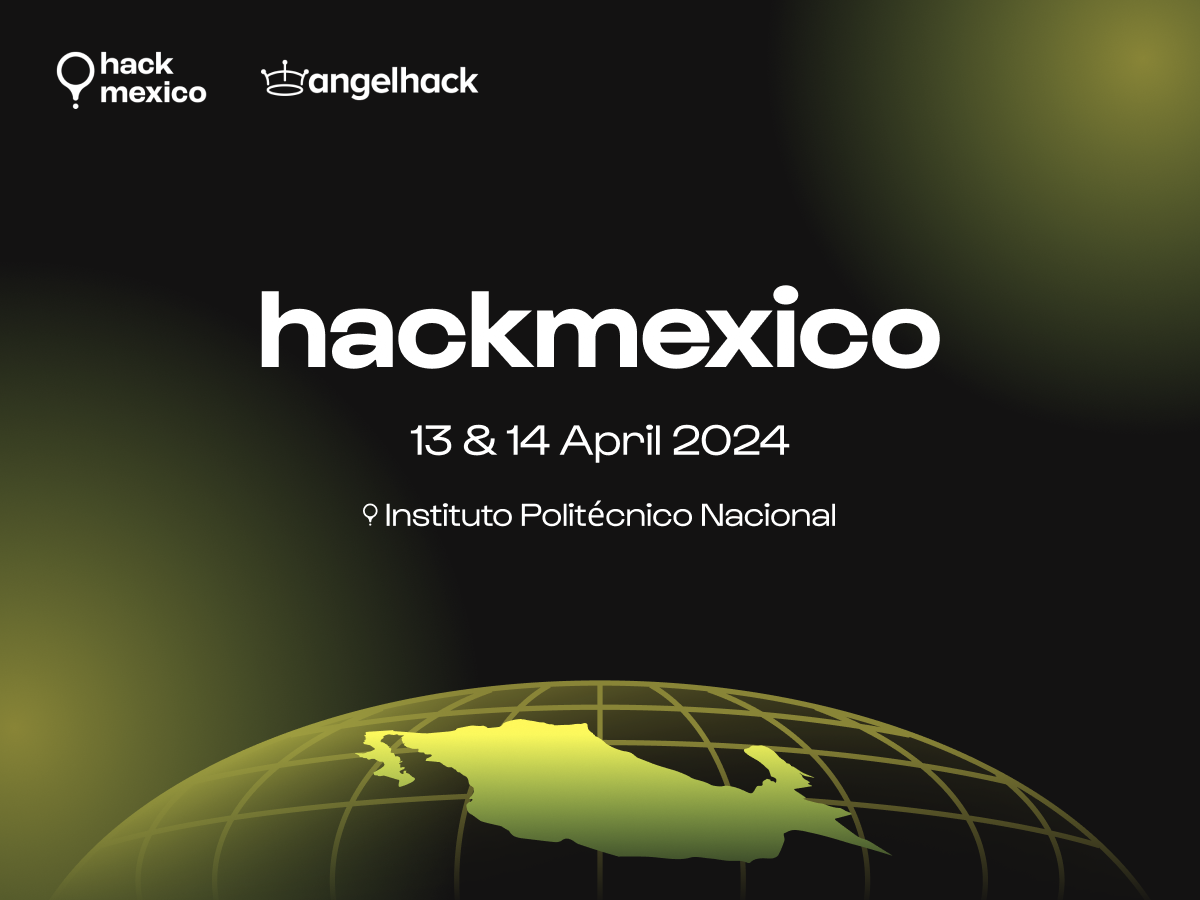
Artificial intelligence was not used in the generation or editing of this blog post.
What’s the purpose of a hackathon? And what do people actually do there? If you’re simply curious, or have even considered attending. You’re in the right place, as this blog post is about my experience preparing and attending HackMexico 2024. Read to the end to find out why we were ultimately disqualified, and left early!
What the heck is a hackathon?
A hackathon is when you have a fixed amount of time to ‘hack’ AKA code towards a specific goal under specific time constraints. No code is allowed to be written beforehand, but in certain events like this one, preparation of UI wireframes and data training AI algorithms can be done ahead of time.
There are all sorts of hackathons: making a video game, using a new technology, or trying to address specific societal problems. HackMexico was the last, and presented three themes to address modern world needs: financial inclusion, social responsibility, and digital empowerment.

I like coding alone, but I also like coding with others. Even if you’re not working on the same codebase, having everyone aligned towards a goal is great to keep you focused, as well as making things interesting by providing opportunities to interact with locals and other expats.
Brainstorming Ideas
I find visualising products easier when a clear need has been identified. I broke down social responsibility and digital empowerment into smaller problems based on my experience, and came up with brief solution descriptions.

One stood out to me the most: better real-time transport updates. Using technology to improve the way you navigate around the city with cheap or free transport gives you more autonomy, and is a form of digital empowerment (theme check! ✅).
Waze for Ecobici and public transport
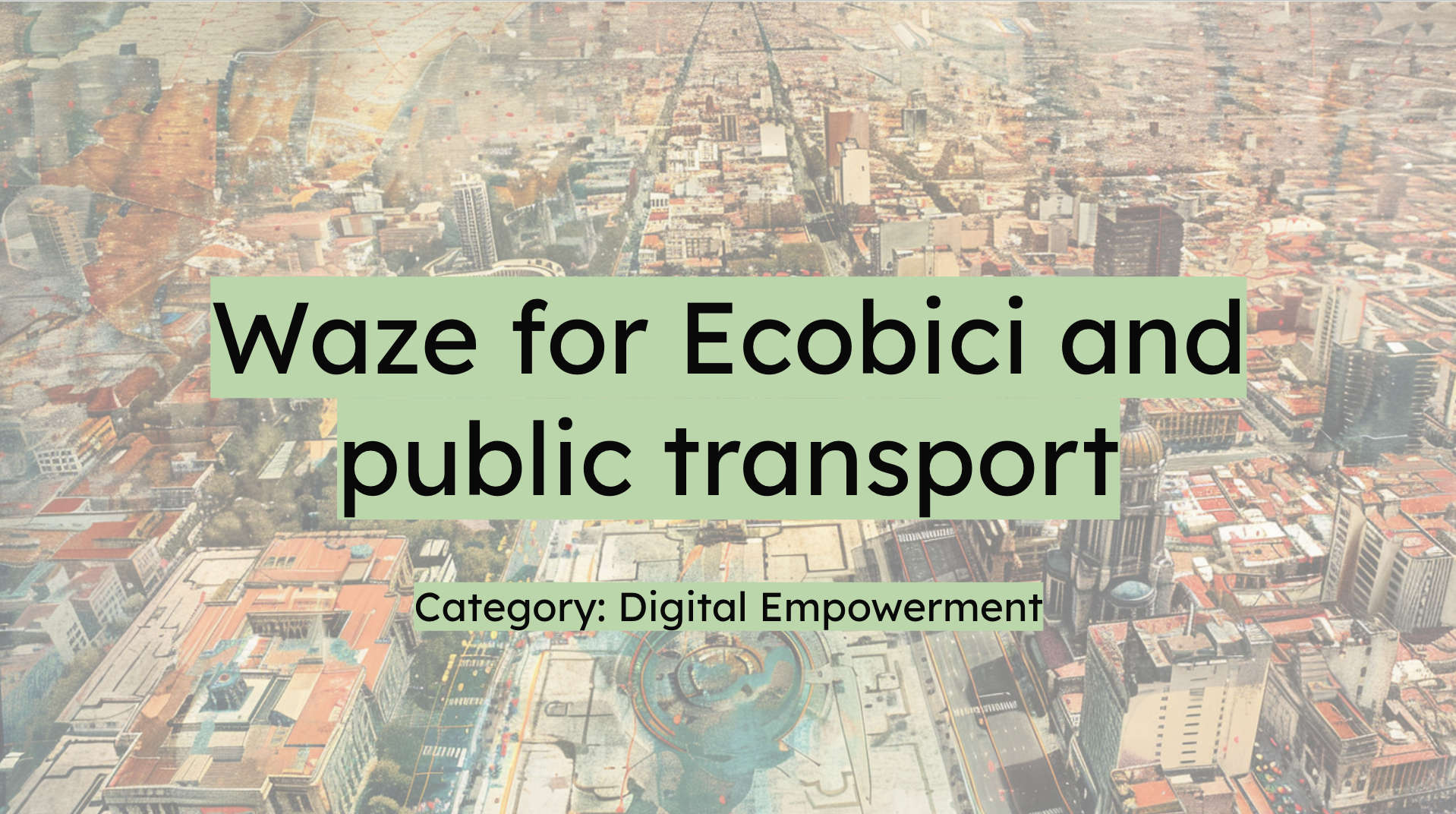 This was the first slide of the pitch to my partner
This was the first slide of the pitch to my partner
I’m a huge fan of biking and public transport. It’s cheap, better for the environment, and also is used by the majority of the public. I made a quick presentation to pitch to my co-founder to see if I could get him on board.
I liked the catchiness of the concept, which had the following important points:
- Quickly recognizable: Waze is an app that is (unfortunately) extremely common in Mexico. It helps drivers navigate Mexico’s crazy traffic with real time updates on events like accidents and roadworks.
- Green! Biking isn’t just low cost, but it’s also good for you.
- High potential for using AI in some novel, but useful ways: AI is so hyped at the moment, and there seemed to be some obvious use cases for our concept that would get us points with the judges.
What the heck is Ecobici?
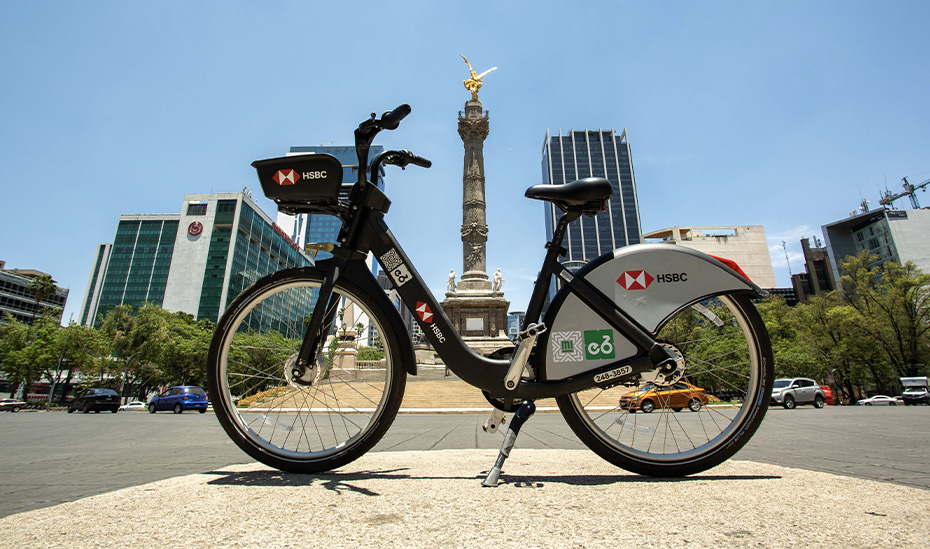
Ecobici is a bike sharing system in Mexico City. It’s extremely affordable at only around 30 USD (545 MXN) per year, and as long as you return the bike to a docking station in less than 45 minutes, it’s completely free. It’s super simple to use, just scan the QR code with your phone, adjust the seat, and ride. When you’re finished you can return the bike back to a dock without having to touch your phone.
Ecobici started in 2010 and has been a huge success. In the month of January 2024, there were 1.5 million rides, and a record 70,000 in a single day on February 13th [Source]. Due to its success, the system was recently expanded in 2022 with hundreds of additional docking stations and bikes.

Each icon represents a docking station with 20 or more bikes!
If you can’t tell, I love biking and think Ecobici is amazingly executed, from the well engineered mobile app to the design of the bikes and the docking stations. If you’re visiting Mexico City, you can get set up with the android and iOS super quickly.
Ecobici Data
I knew in order to get attention from the judges we would have to incorporate AI into our product. We didn’t have a huge database of user submitted data like Waze, so we had to find an alternative.
It didn’t take long to find that Ecobici has a whole section dedicated to the open data protocol General Bikeshare Feed Specification (GBFS) where you can access data via a live api, as well as download historical data on a month by month basis.
Station Information and Status (live)
The live API contains station data in the form of static station information as well as dynamic station status. Other routes and properties exist but have been omitted for the sake of simplicity.
Station Information

Station Status

This data is great, but we can’t infer trends over time if we only have a single snapshot. Therefore I wrote a small script to save snapshots every hour in Javascript via a Github Actions. It ran for some weeks so that we could infer trends not just based on the time of day, but also the day of the week.
If you want to see this script or access the resulting data for calendar week 14, you can access it on my Github here: https://github.com/SimonHFrost/ecobici-api-poll-and-save
Trip Information (historical)
As well as live data, Ecobici provides historical data about trips via a huge .csv file for each month (over a million rows for January!). This data is focused on bikes and trips, rather than stations themselves. Below is an example of the first 10 rows from January 2024.

We now have data! We weren’t sure what features we wanted to make with our app, but we were confident we could create something interesting with the data. We were ready for the hackathon! Or so we thought…
A wheely sticky situation…

A week before the event. We were notified that each theme now had additional requirements. The one we selected, now specified:
Digital Empowerment: Mexico has a rich cultural heritage and booming tourism sector. Create a digital platform that promotes accessible tourism in Mexico to ensure inclusive travel experiences.
Despite reading the hackathon format documents ahead of time, this change to the theme was pretty unexpected. We tried to pivot our Ecobici preparation but it didn’t seem to fit any of the themes well. We were pretty disappointed because we had become attached to our Ecobici idea.
It also turns out participants weren’t allowed to leave the premises on the Saturday night, under threat of disqualification. This might have been okay if we were younger, but meant that we were most probably not going to last the whole event.
The hackathon begins!
Day one of the hackathon began with a countdown and furious coding. The atmosphere was intense, although there didn’t seem to be much talking, there was a constant hum of coders busy at work, as well as podium for speakers at the back to inspire everyone.

Ultimately, we decided the main preparation we could salvage through was to reuse the technology preparation we had done with OpenStreetMap, Vite, and React. We decided to go for the new theme Social Responsibility: Mexico grapples with the dual challenge of food wastage and food scarcity.
Dorado Dumpster (Golden Dumpster)
Dorado Dumpster is a dumpster diving app where you can track and share locations where perfectly good groceries have been thrown away that can still be used. It was silly and simple enough that we thought we could ‘hack’ out in short notice.
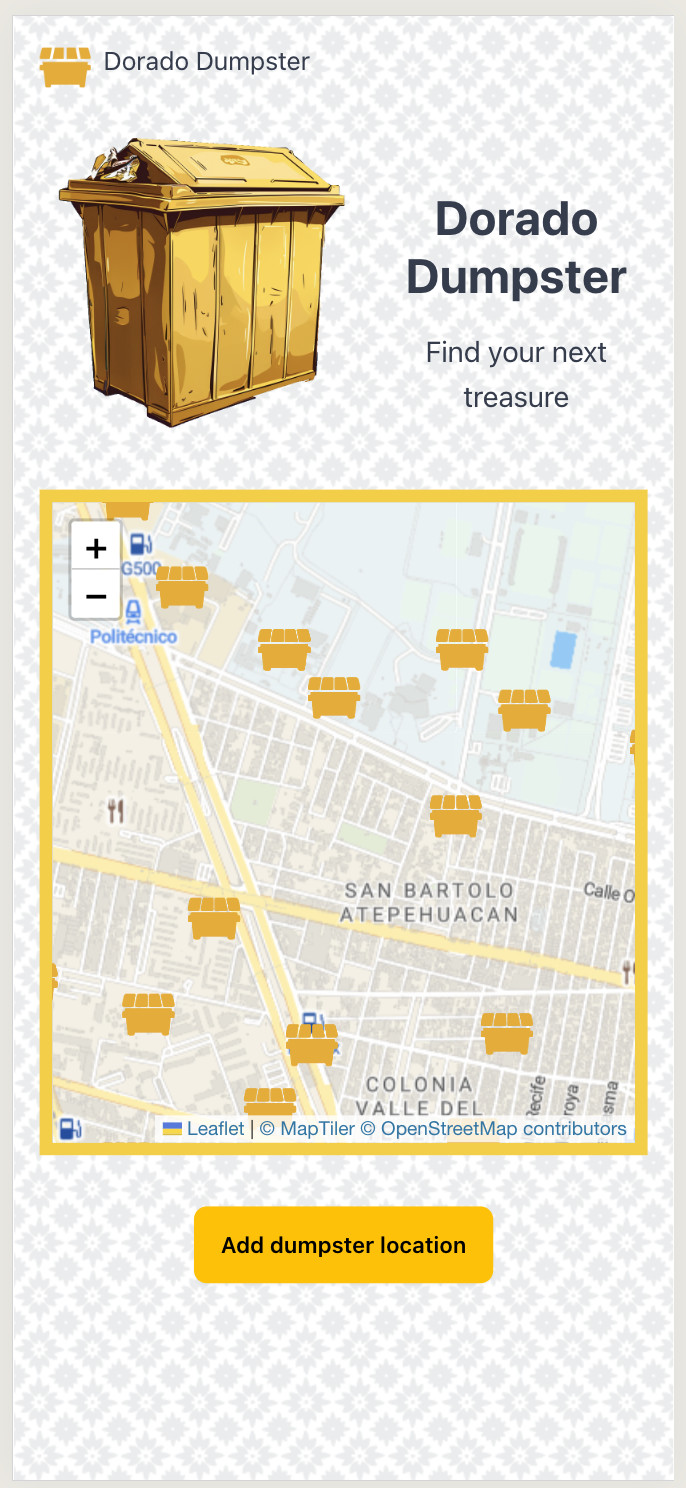
While it was quite different from what we originally planned, we still managed to hack together a basic Minimum Viable Product (MVP), learned some new tech, and learn how to work better with each other.
Conclusion
Despite not being able to work on the idea we originally planned, and being disqualified for not staying overnight. Getting our hands dirty prototyping from start to finish, alongside other motivated and smart coders was a memorable experience. Especially in Mexico.
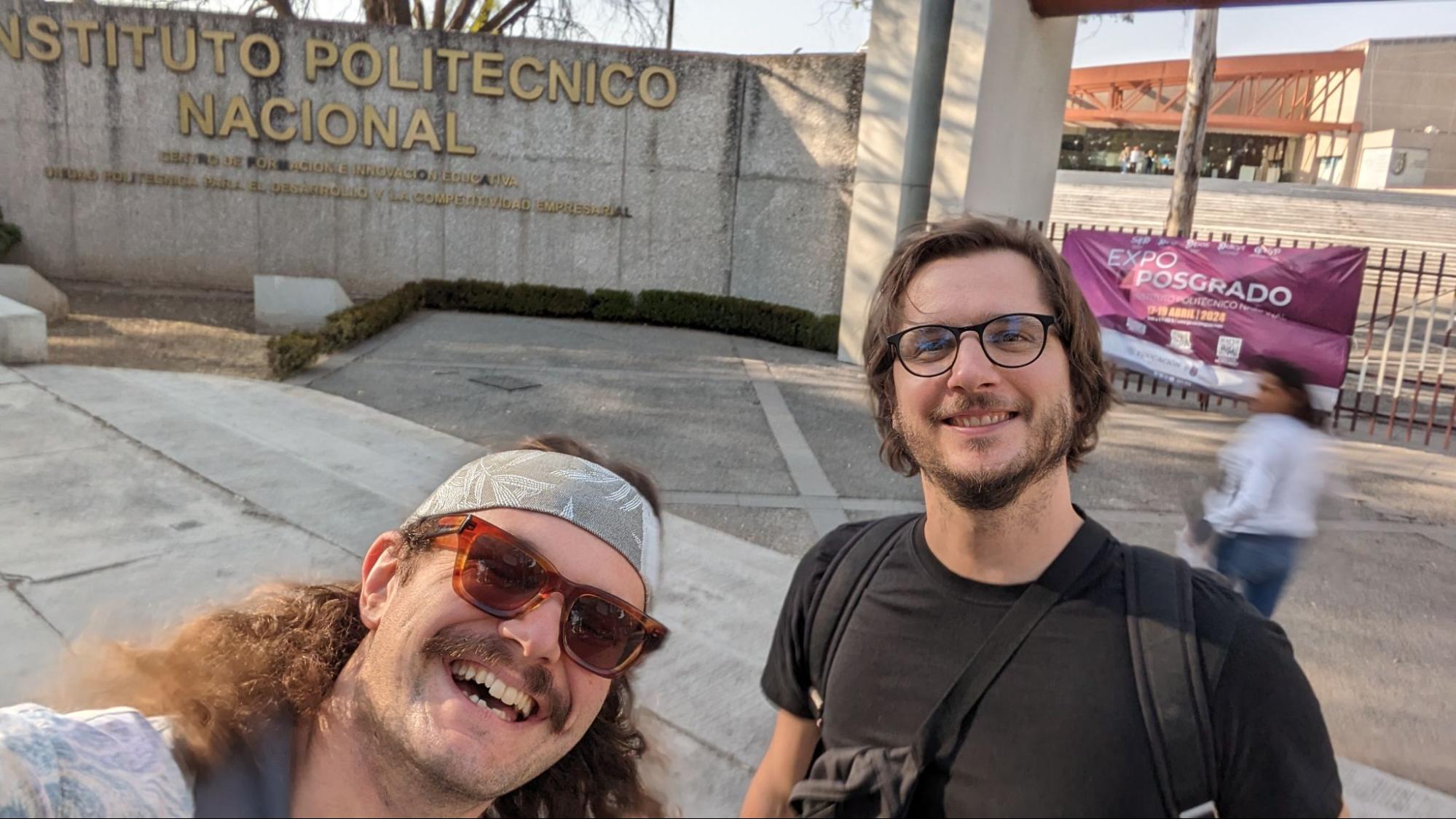
I was pleasantly surprised to see platforms I love like Ecobici openly publish their data, as I believe sourcing and normalising data sources is a practice that will become more common as the world becomes consumed by artificial intelligence.
If you need help creating or extending your mobile or webapp. Send us an email at hi@mosmos.mx or checkout our shiny ✨ new website at mosmos.mx!